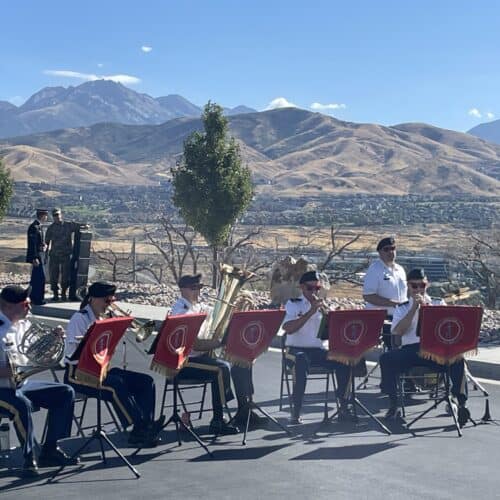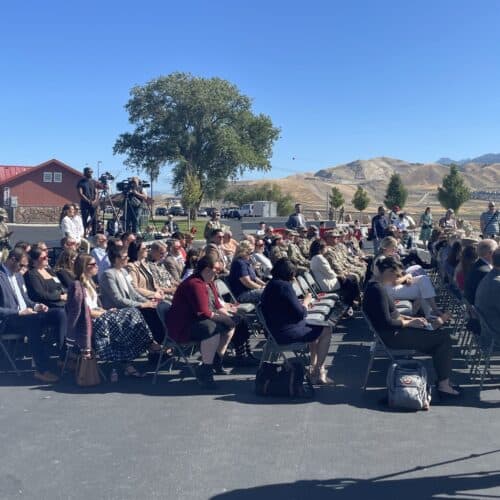Share
BLUFFDALE, Utah — Jacobsen Construction joined military leaders and state and federal dignitaries in celebrating the groundbreaking of the new Fort Douglas facility at Camp Williams on Monday.
With a ceremonial shovel turn, community leaders ushered in the construction of a new and improved facility serving U.S. Army reservists in the Beehive State.
“Utah wants to be the first and the best choice for new and enhanced defense missions,” Utah Lt. Gov. Deidre Henderson told those who were gathered to celebrate. “We believe that supporting well-run bases and units best contributes to our national security efforts.”
Fort Douglas was first founded in 1862 in Salt Lake City and has had a continuous presence in the state ever since. The facility is being moved from the University of Utah campus in Salt Lake City to Camp Williams, a Utah Army National Guard installation about 30 miles southwest in Bluffdale, to benefit U.S. Army reservists with a larger, more modern setting for training and instruction.
Co-locating the training centers of the Army Reserve and Utah Army National Guard is a rare and innovative move that will improve collaborative efforts between the two. That’s according to Major General Daniel D. Boyack, who serves as the commander of the Utah Army National Guard.
“This move is more than just a change of location. It provides essential collaboration, shared purpose and strengthened partnership between the Army Reserve and Utah National Guard,” Major General Boyack said in remarks at the groundbreaking. “By joining forces to build at Camp Williams, we’re building a stronger and more resilient defense force (that is) prepared to meet the challenges of the future.”
Jacobsen is the general contractor on the project, which calls for a 175,000-square-foot, two-story training building and a 38,000-square-foot climate-controlled storage building. The project will also include a vehicle maintenance shop and wash bay, as well as sewer and power site work. Completion is scheduled for March 2026.
The University of Utah and state of Utah are additional key partners on the project; the relocation of Fort Douglas will also benefit the university, which can use the freed up space to expand its campus while also preserving the fort’s historic military structures.
Other dignitaries in attendance at Monday’s celebration included U.S. representatives John Curtis, Burgess Owens and Celeste Maloy, all of whom represent Utah in Congress, as well as Utah Senate President Stuart Adams.









